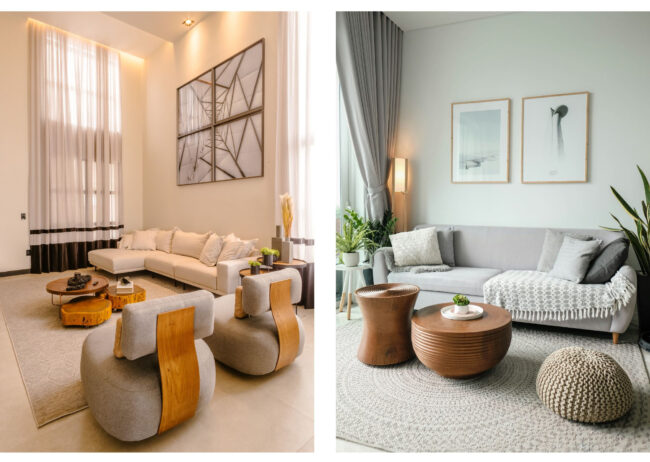Designing your home is a journey that blends creativity with functionality. Yet, even with the best intentions, many people fall into common traps that affect the final result of their space. Whether you’re setting up a new place or giving your home a refresh, avoiding certain design pitfalls can make a significant difference in comfort and aesthetics. In this article, we’ll explore seven frequent interior design mistakes — and more importantly, how to avoid them.
1. Ignoring the Importance of Lighting
Lighting can make or break a space. Relying solely on overhead lights or failing to consider natural light leads to dull, flat interiors. Poor lighting can also impact how colors and textures appear.
How to avoid it:
- Layer your lighting: combine ambient, task, and accent lighting.
- Use mirrors to reflect natural light in darker rooms.
- Invest in dimmable light fixtures for versatility.
- Consider the function of each room and light accordingly.
2. Choosing Paint Colors First
It might seem logical to start with the wall color, but this often limits your options later. Paint is easy to adjust — furniture, rugs, and art are not.
How to avoid it:
- Choose large furniture and decor elements first.
- Once your key pieces are in place, test paint swatches in different lighting conditions.
- Pick paint colors that complement your furnishings, not the other way around.
3. Overcrowding the Space
Filling a room with too much furniture or too many decor items can make it feel cramped and chaotic. Every piece should serve a purpose or add value.
How to avoid it:
- Prioritize quality over quantity.
- Leave some breathing room between items.
- Use multifunctional furniture, especially in small spaces.
- Stick to a cohesive theme or color palette.
4. Hanging Art Too High or Too Low
Artwork can elevate a room — but when it’s hung at the wrong height, it feels disconnected from the rest of the space.
How to avoid it:
- The center of the artwork should be at eye level, roughly 57–60 inches from the floor.
- When hanging a gallery wall, plan the layout first using paper templates.
- Over a sofa or console, the artwork should be about two-thirds the width of the furniture.
5. Lack of a Focal Point
A focal point anchors the room and gives the eye a place to rest. Without one, the space can feel disorganized or bland.
How to avoid it:
- In living rooms, a fireplace, large artwork, or a bold piece of furniture can be the focal point.
- Use lighting to draw attention to this area.
- Avoid placing too many “loud” elements that compete with each other.
6. Ignoring Scale and Proportion
Even beautifully designed pieces can look out of place if they’re the wrong size. A tiny rug in a large room or a large sofa in a small space disrupts visual balance.
How to avoid it:
- Measure everything before buying.
- Use appropriately sized rugs — for example, living room rugs should anchor the front legs of all major furniture.
- Match furniture height and width to the size of the room and other pieces.
7. Following Every Trend
Trends come and go — what’s in today may feel outdated next season. Decorating your home based entirely on current trends can make it look impersonal or dated quickly.
How to avoid it:
- Use trends in small, interchangeable items like cushions, vases, or wall art.
- Focus on timeless elements for big-ticket items like sofas or cabinetry.
- Personalize your space with meaningful objects and colors you truly enjoy.
Final Touches That Make the Difference
Great design isn’t about perfection — it’s about creating a space that reflects your lifestyle, personality, and comfort. By avoiding these common mistakes and making intentional choices, you’ll craft a home that not only looks beautiful but feels truly yours.
